In 2024, our team, in cooperation with the Museum of the First Piasts in Lednica and as part of a long-term research project, made a unique discovery at the bottom of Lednica Lake. Among the relics of the defensive fortifications of the stronghold on Ostrów Lednicki, we came across a carefully crafted construction beam, a so-called hook, on which a human face was carved. This discovery inspires admiration for the craftsmanship of over a thousand years ago and opens up a fascinating discussion about the spiritual life of the early medieval Slavs.
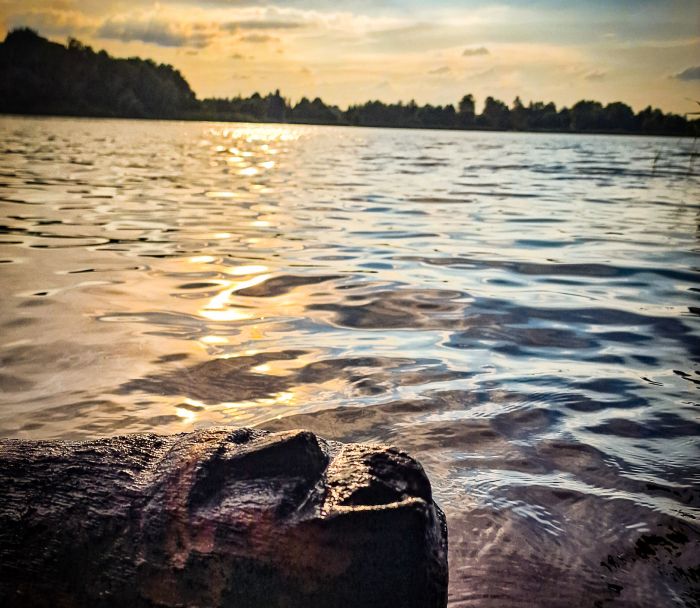
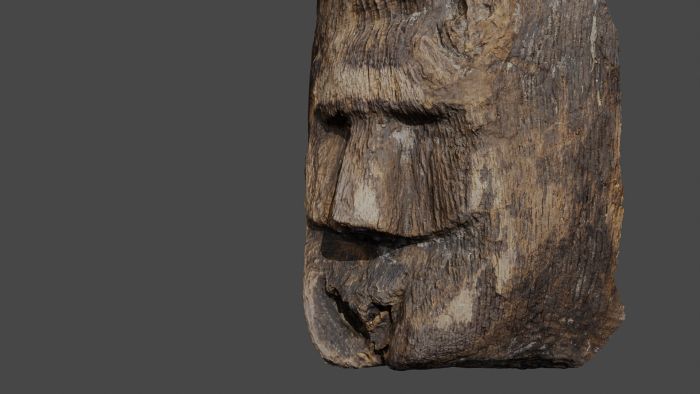
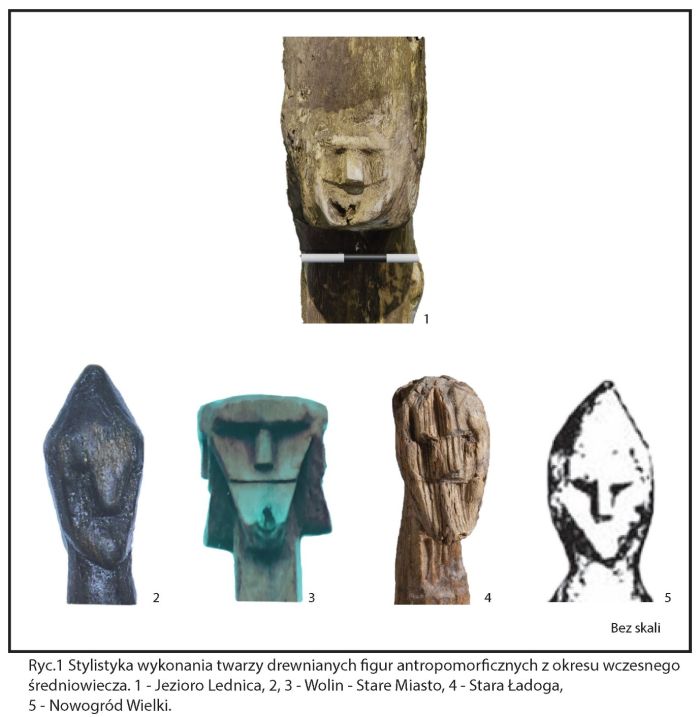
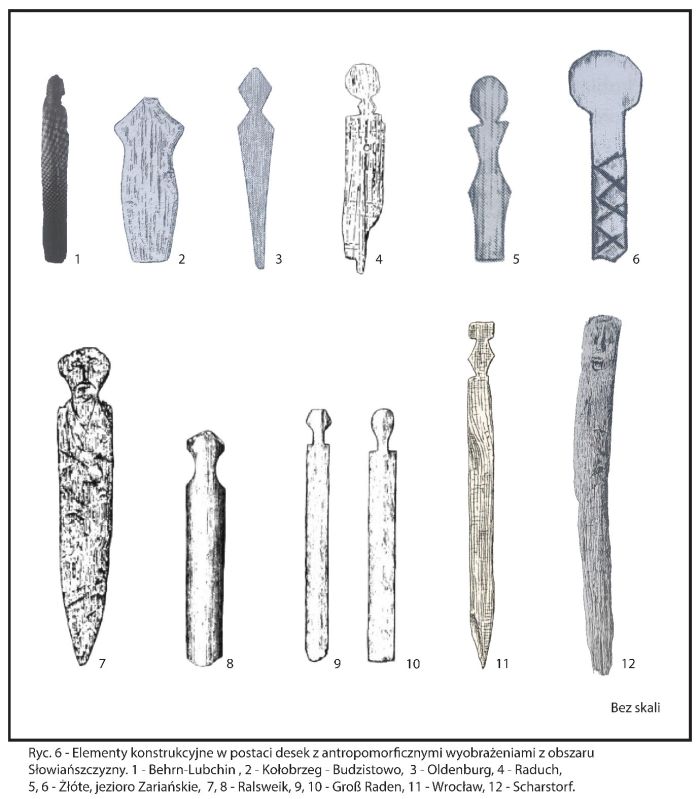 The find from Lednica thus fits into the broader context of magical protective practices known from the Slavic world. Sometimes, animal bones – especially horse jaws and skulls – are also found in defensive structures, which may indicate ritual protective offerings. On Ostrów Lednicki, the remains of a horse were even discovered under one of the houses, as well as a fragment of a golden cap with an image of a horse at the base of the fortification, which may also indicate the ritual nature of these practices.
The find from Lednica thus fits into the broader context of magical protective practices known from the Slavic world. Sometimes, animal bones – especially horse jaws and skulls – are also found in defensive structures, which may indicate ritual protective offerings. On Ostrów Lednicki, the remains of a horse were even discovered under one of the houses, as well as a fragment of a golden cap with an image of a horse at the base of the fortification, which may also indicate the ritual nature of these practices.
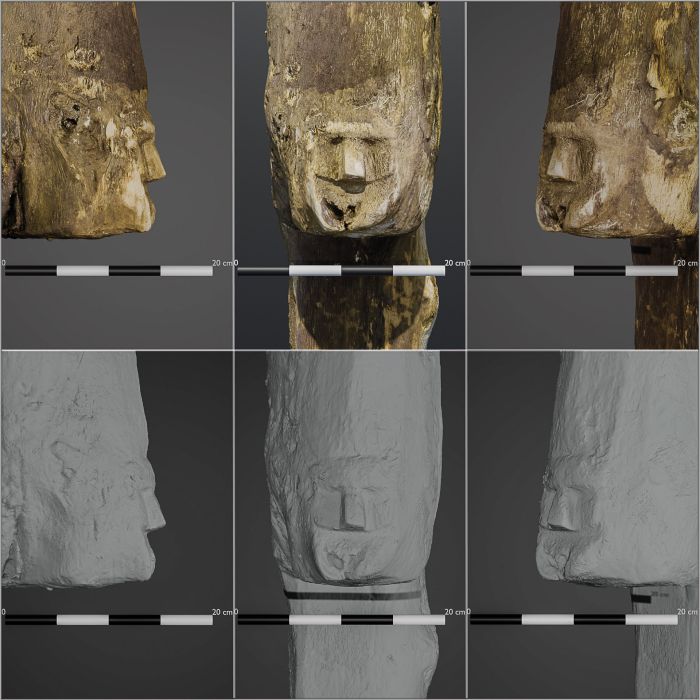 If we assume that the representation from Ostrów Lednicki had a protective or sacred function, we must revise our current approach to assessing the material traces of Slavic spirituality. These were monumental statues of gods and everyday objects with a spiritual dimension – parts of buildings, palisades and gates.
If we assume that the representation from Ostrów Lednicki had a protective or sacred function, we must revise our current approach to assessing the material traces of Slavic spirituality. These were monumental statues of gods and everyday objects with a spiritual dimension – parts of buildings, palisades and gates.
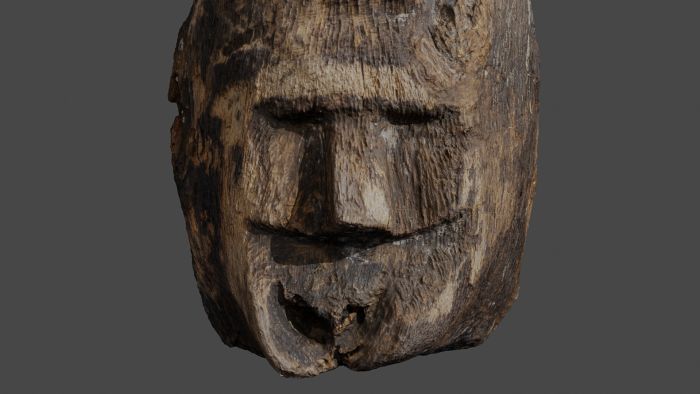 On the other hand, a more ‘profane’ interpretation is possible – that it is simply a sculpture inspired by the appearance of someone famous or the ordinary need to decorate a structural element. However, we believe such a rational, secular approach to reality is typical of the 20th and 21st centuries. In the early medieval world, the sacred and the profane boundaries were much more fluid. Everyday life was imbued with symbolism, and everyday objects often had a second, spiritual meaning.
On the other hand, a more ‘profane’ interpretation is possible – that it is simply a sculpture inspired by the appearance of someone famous or the ordinary need to decorate a structural element. However, we believe such a rational, secular approach to reality is typical of the 20th and 21st centuries. In the early medieval world, the sacred and the profane boundaries were much more fluid. Everyday life was imbued with symbolism, and everyday objects often had a second, spiritual meaning.
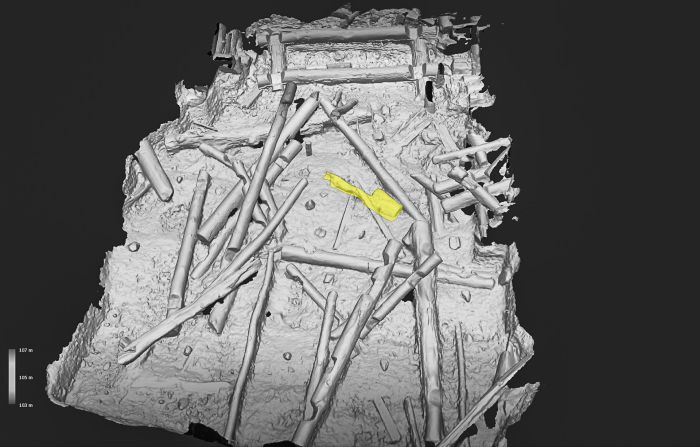 Research conducted in Lake Lednica for over 40 years has continuously provided discoveries of great cultural and scientific value. The discovery of the anthropomorphic beam is an essential argument in the ongoing debate about the roots of figural art in Slavic culture and the spirituality of its inhabitants. We are dealing with a local product – both stylistically and culturally – that fits into a wide range of Slavic magical, apotropaic, and ritual practices.
Research conducted in Lake Lednica for over 40 years has continuously provided discoveries of great cultural and scientific value. The discovery of the anthropomorphic beam is an essential argument in the ongoing debate about the roots of figural art in Slavic culture and the spirituality of its inhabitants. We are dealing with a local product – both stylistically and culturally – that fits into a wide range of Slavic magical, apotropaic, and ritual practices.
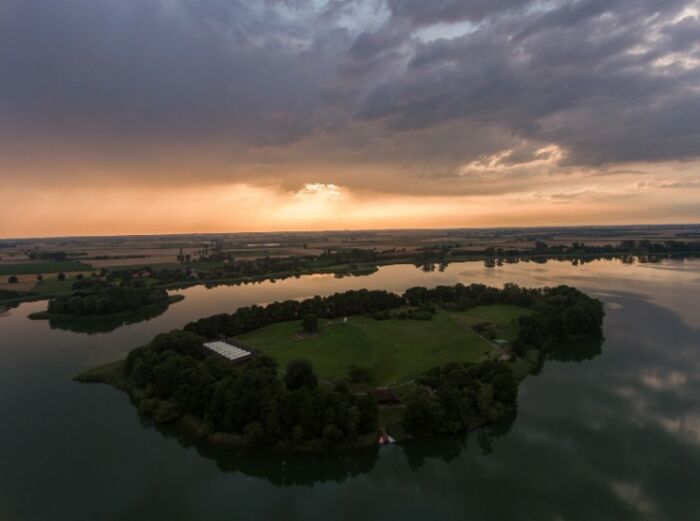
back

The beam with a face – a unique find
The wooden beam, marked with the number 353, was originally part of the defensive fortification of the stronghold. Marek Krąpiec's dendrochronological laboratory estimated the year the tree was cut down to make this element 967 (+6/-7). On one of its surfaces, at the fork of a branch, there is a face with very realistic features: the eyes, nose, mouth, and a characteristic chin and oval head shape are visible. The face is about 12 cm high and 9 cm wide – it is not a miniature figurine, but a full-size architectural element whose function went beyond purely structural purposes. The way the wood was crafted and the facial expression indicate that it was not just a simple ornament. It is possible that the representation had a symbolic meaning, as an image of a deity, a guardian spirit, or a hero protecting the inhabitants of the stronghold.
Slavic spirituality enchanted in wood
In the material culture of the Slavs, anthropomorphic figurative representations may have been much more common than the number of preserved monuments suggests. Wood, the basic raw material, decomposes quickly, so such objects have survived only in unique conditions, such as wetlands or underwater environments. The beam from Lake Lednica, perfectly preserved in a landslide, is therefore a unique object of exceptional scientific and cultural value. Similar representations of faces have been discovered earlier in Wolin, Veliky Novgorod, and Stara Ladoga, among other places. The most stylistically similar artifact is a four-faced figurine from Wolin, dating from the 9th century, made with similarly simplified features—a triangular chin, a straight nose, and a schematic representation of the eyes and eyebrows. This similarity in detail reinforces the assumption that the Lednica beam represents a local artistic and spiritual tradition, rather than the influence of Scandinavian or Russian culture, as previously suggested.
Magic and protection are hidden in wood
The face on the hook may have served an apotropaic function – warding off evil forces and protecting the inhabitants of the stronghold. Such representations are known from other Slavic strongholds and settlements, where figurines, statues, and boards with human and animal faces have been found embedded in walls, fences, and even temple walls. Examples include a zoomorphic figurine from Gniezno and carved boards from Żółte, Kołobrzeg, Ralswiek, and Wrocław. The find from Lednica thus fits into the broader context of magical protective practices known from the Slavic world. Sometimes, animal bones – especially horse jaws and skulls – are also found in defensive structures, which may indicate ritual protective offerings. On Ostrów Lednicki, the remains of a horse were even discovered under one of the houses, as well as a fragment of a golden cap with an image of a horse at the base of the fortification, which may also indicate the ritual nature of these practices.
The find from Lednica thus fits into the broader context of magical protective practices known from the Slavic world. Sometimes, animal bones – especially horse jaws and skulls – are also found in defensive structures, which may indicate ritual protective offerings. On Ostrów Lednicki, the remains of a horse were even discovered under one of the houses, as well as a fragment of a golden cap with an image of a horse at the base of the fortification, which may also indicate the ritual nature of these practices.
Not just temples – art in everyday life
Thanks to written sources (including Thietmar, Herbord, Helmold and Nestor), we know that the early medieval Slavs did not limit figural representations to the interiors of temples. Sculptures of people and animals also decorated fences and gates. Buildings from Fischerinsel and Altfreisack in Germany provide physical evidence of the existence of such figures. It can therefore be assumed that the carved beam from Lednica is part of the same cultural circle. If we assume that the representation from Ostrów Lednicki had a protective or sacred function, we must revise our current approach to assessing the material traces of Slavic spirituality. These were monumental statues of gods and everyday objects with a spiritual dimension – parts of buildings, palisades and gates.
If we assume that the representation from Ostrów Lednicki had a protective or sacred function, we must revise our current approach to assessing the material traces of Slavic spirituality. These were monumental statues of gods and everyday objects with a spiritual dimension – parts of buildings, palisades and gates.
Is it the face of a god, an ancestor or a legendary hero?
The final interpretation of the find remains open. Is it a representation of a god? Or perhaps an ancestor or legendary hero who guarded the island? Mythological figures appear in the mythologies of many peoples, beings intermediate between gods and humans, helping the community, warning of dangers, patronising crafts and rituals. It is possible that such a figure was immortalised in wood by a Slavic carpenter. On the other hand, a more ‘profane’ interpretation is possible – that it is simply a sculpture inspired by the appearance of someone famous or the ordinary need to decorate a structural element. However, we believe such a rational, secular approach to reality is typical of the 20th and 21st centuries. In the early medieval world, the sacred and the profane boundaries were much more fluid. Everyday life was imbued with symbolism, and everyday objects often had a second, spiritual meaning.
On the other hand, a more ‘profane’ interpretation is possible – that it is simply a sculpture inspired by the appearance of someone famous or the ordinary need to decorate a structural element. However, we believe such a rational, secular approach to reality is typical of the 20th and 21st centuries. In the early medieval world, the sacred and the profane boundaries were much more fluid. Everyday life was imbued with symbolism, and everyday objects often had a second, spiritual meaning.
Ostrów Lednicki – the spiritual heart of the first Piasts
The discovery of a carved face in the defensive embankment only confirms the unique role of Ostrów Lednicki not only as a political centre, but also as a spiritual one. Here, Christianity encountered deeply rooted pagan beliefs, and the inhabitants of the stronghold tried to combine new rituals with traditional forms of spiritual protection. Research conducted in Lake Lednica for over 40 years has continuously provided discoveries of great cultural and scientific value. The discovery of the anthropomorphic beam is an essential argument in the ongoing debate about the roots of figural art in Slavic culture and the spirituality of its inhabitants. We are dealing with a local product – both stylistically and culturally – that fits into a wide range of Slavic magical, apotropaic, and ritual practices.
Research conducted in Lake Lednica for over 40 years has continuously provided discoveries of great cultural and scientific value. The discovery of the anthropomorphic beam is an essential argument in the ongoing debate about the roots of figural art in Slavic culture and the spirituality of its inhabitants. We are dealing with a local product – both stylistically and culturally – that fits into a wide range of Slavic magical, apotropaic, and ritual practices.
History carved in wood
Although we will never know the name of the figure on the beam, nor what role it played in the beliefs of the inhabitants of Ostrów Lednicki, one thing is sure: its face – carved with extraordinary precision and attention to detail – has survived for over a thousand years to speak to us today from the depths of the lake. This piece of wood encapsulates a story about a world in which spirituality and everyday life were inseparable, and sculpture was not only a form of artistic expression, but also a tool for protection, faith and identity.

 Szosa Bydgoska 44/48, 87-100 Toruń
Szosa Bydgoska 44/48, 87-100 Toruń